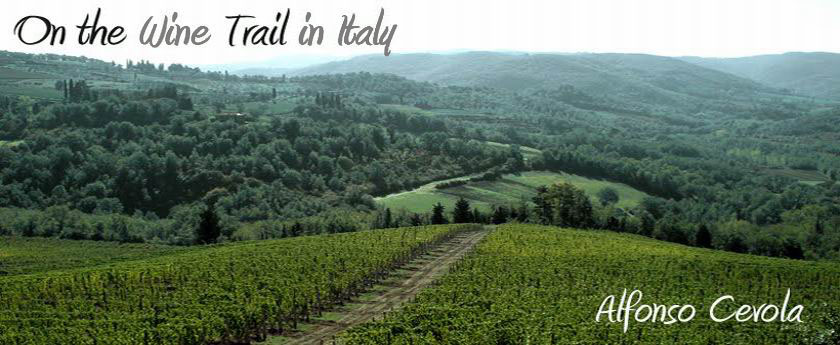I came across two wineries in Bari last month at Radici del Sud. The first winery, Calabretta (not to be confused with the Sicilian winery of the same name). My first foray with their wines was a dry rosato of Gaglioppo grapes. Richly colored, not bleached and anemic. No, this one is rosy-cheeked and well-tanned. But sleek and thin it isn’t. This is a wine with meat on the bones and flavors that bring out the natural side of the Calabrian countryside. Indigenous yeasts, organically farmed. Calabria, once a dumping ground for chemicals and international varieties, pushed for large quantities. Not this time.
These are wines to savor, as I did for several nights. Living in a warm region of the United States, I look for wine to be refreshing and to also go with the spicier foods we eat in the Southwest. July isn’t always the best time for a Nebbiolo from the Langhe or a Cabernet/Merlot blend from Bordeaux or Napa Valley. And while I love and appreciate those wines, I’m looking to go deeper into Italy and her wines. I’m not wary of the byzantine nature of wines in Italy. I relish it. Maybe that’s the way I’m wired. While I can love wines from France or California and the subtle intricacies of wine from Italy’s lesser known regions pose a welcoming challenge to me. What’s there? What’s interesting? What can I bring back? Who can I share it with?
The other winery, Casa Comerci, makes a red and a rosato from an obscure grape called Magliocco Canino. My southern Italian expert, Ole Udsen, tells me it is not related to the Magliocco grape. Cesare Petracca at Comerci is part of an informal group of Calabrese terroiristi who are embracing their obscurity which I believe has started a little revolution in the South. The Magliocco Canino, also minimal intervention in the winemaking, is like a rabbit hole. You just fall in and go deeper and deeper, discovering an unwritten history of wine as a result. Ole tells me stories of going to the pork butchers of Spilonga, known as porcara, in search of the ultimate ‘nduja. A kind of a holy grail exists among American salumeristi’s, who put ‘nduja on a pedestal similar to foie gras. Cesare Petracca showed his wines with the ‘nduja he (and Ole) believe is from the best porcara in Spilonga. With their rosato, it was a revelation.
I cannot imagine anyone using the excuse of “Italian wines are too complicated” to forgo having this singular kind of experience. Where on earth can one go and turn back the clock a couple hundred years to experience eating and drinking like our great-great-great grandparents did? It’s time travel that is possible, achievable and delicious. Let me see, a wine cellar full of classified growths or an experience like this? Count me in for door number two. To an outsider, Calabria, with their particular ways, their language and their unconventional customs can be intimidating. The touristification of Italy has created a country where the old ways are receding into the dust bin of history. Southern Italy gives the bold traveler a glimpse back into that old world. The people are genuine, the weather is fabulous and the foods are unlike anywhere else in Italy. The wines deserve a look and a taste.
These two wineries are a good place to start. They weren’t the first; they didn’t pioneer a greater understanding of wine from Calabria like Librandi did. For that, I believe we all owe the Librandi family a great debt (a future post will cover an amazing 20 year vertical of Duca Sanfelice Ciro Rosso Riserva I conducted at Radici del Sud). Calabretta and Comerci are an outgrowth of something that began many years ago, but now their efforts are coming to light. I like these wines a lot. They’re wholesome, they’re interesting and they are well integrated with the culture and the food from which they come. We talk about genuine a lot in the world of wine. These wines embody that character. And they are imminently enjoyable.
In other news - ♫ Will you still need me, will you still read me? ♫
This weekend I passed over a personal landmark in time. Whoever thought back then, those of us reading who were alive then, that the day would come? Well, it has. Come and gone. But hopefully, my voice and the peculiar annotations to life still bring some value to the time you, dear readers, expend while perusing these posts. Some say wine blogging is dead - I say some of us have enlarged our world beyond to those things that make wine such a joy in an integrated life. In any case, thank you for coming and for coming back, all these years, if for no reason other than to check in and see if the heart is still beating. Yes, the beat goes on and on and on the wine trail in Italy.
written and photographed by Alfonso Cevola limited rights reserved On the Wine Trail in Italy
wine blog + Italian wine blog + Italy W






